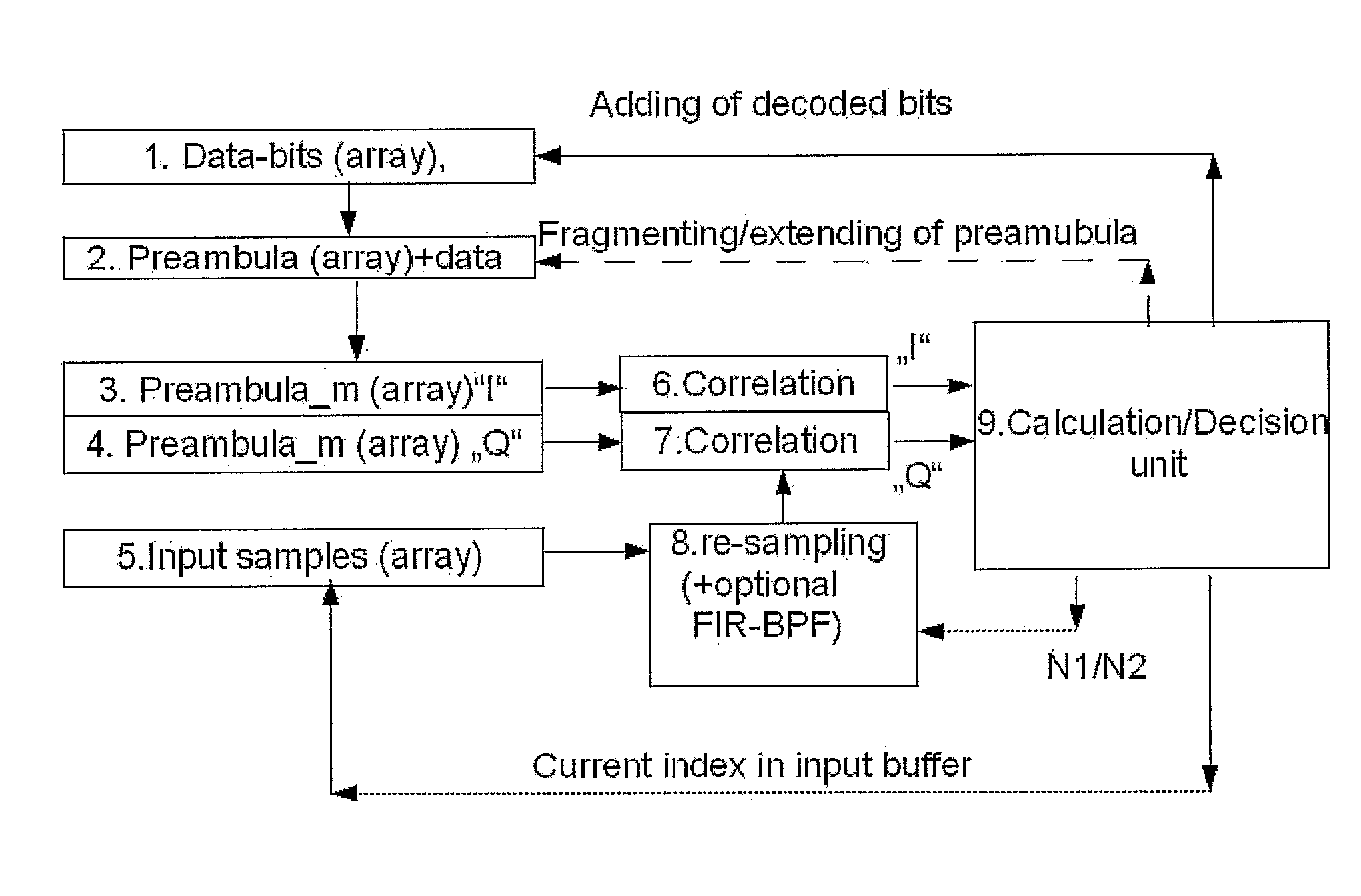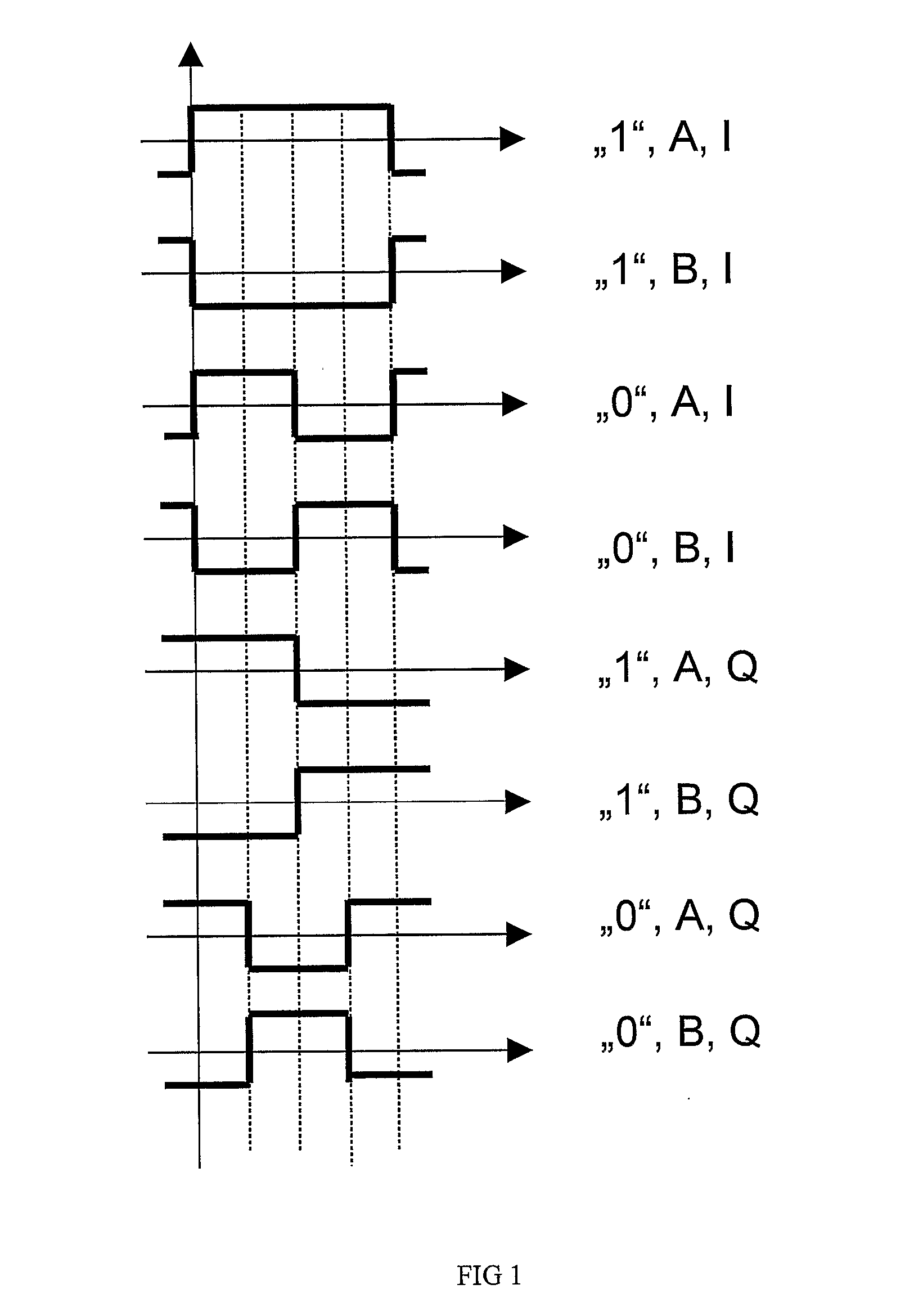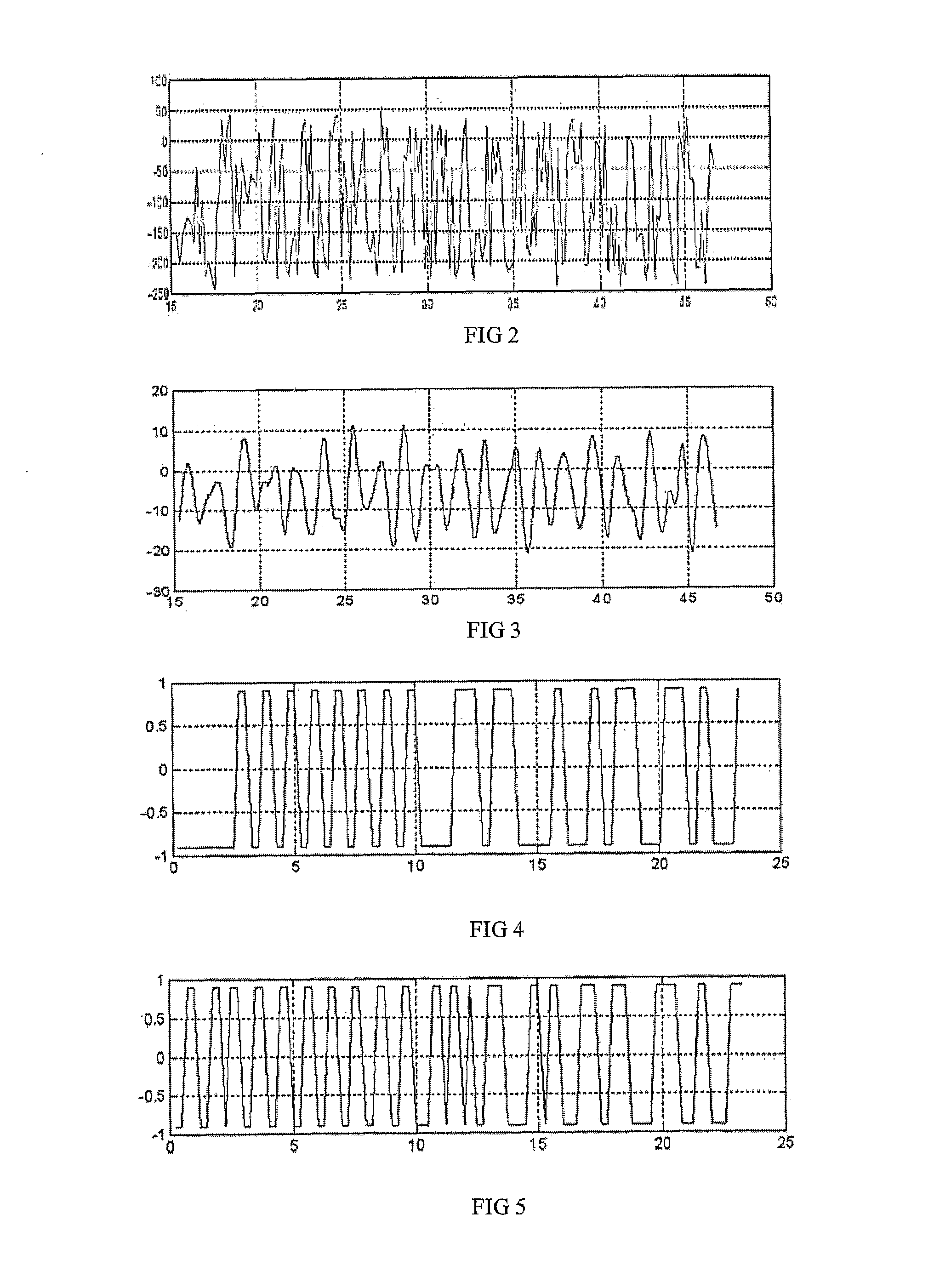Method and device for synchronization of a decoder of a RFID receiver
- Summary
- Abstract
- Description
- Claims
- Application Information
AI Technical Summary
Benefits of technology
Problems solved by technology
Method used
Image
Examples
Embodiment Construction
[0018]One embodiment of the invention contains two means for calculation of the correlation of the input signal, relatively to first and second reference waveforms, and, if the first correlation value is large enough, the second correlation value is used for further adjusting the synchronization of the timebase.
[0019]FIG. 1 depicts a first reference waveform and a second reference waveform, marked as “I” and “Q”, respectively, for different data-bit (“0″ and “1 “) and for two initial polarity values (“A” and “B”). So, to waveform fragment “1″, A, I of first reference signal corresponds a fragment “1″, A, Q of second reference signal, and for waveform fragment “1″, B, I of first reference signal corresponds a fragment “1″, B, Q of second reference signal, etc.
[0020]The first reference waveform “I” corresponds to a transmitted bit (symbol) and for ideal case (with no noise and disturbances), exact synchronization is achieved at the maximum correlation of first reference waveform and t...
PUM
 Login to View More
Login to View More Abstract
Description
Claims
Application Information
 Login to View More
Login to View More - R&D
- Intellectual Property
- Life Sciences
- Materials
- Tech Scout
- Unparalleled Data Quality
- Higher Quality Content
- 60% Fewer Hallucinations
Browse by: Latest US Patents, China's latest patents, Technical Efficacy Thesaurus, Application Domain, Technology Topic, Popular Technical Reports.
© 2025 PatSnap. All rights reserved.Legal|Privacy policy|Modern Slavery Act Transparency Statement|Sitemap|About US| Contact US: help@patsnap.com



